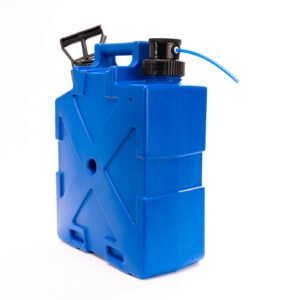
Water and our Planet
Water and our Planet
Water covers 71% of the Earth’s surface. It exists in three different states being liquid, gas and solid. The natural water cycle drives life on this planet. Water evaporates from oceans, rivers and other water systems, which are fed from melting snow and rainfall. The water vapor then precipitates in the Earth’s atmosphere, and falls back down in the form of rain, snow and hail to nourish the earth and start the cycle all over again.
Water comes in many shapes and sizes. In some cases it is fierce and dangerous, but in some cases it is magical and jaw dropping. We cover at five of the world’s biggest, natural water features.
Did you know water is the most comon substance on this planet, spend 98% of its life in oceans, 1.8% in rivers and 0.2% in the atmosphere?

The Biggest Ocean
Covering 33% of the Earth’s surface and 46% of the Earth’s total water surface, the Pacific Ocean is our largest ocean by a long shot. The deepest area of the ocean, called the Mariana Trench in the western North Pacific, is the deepest point in the world reaching 10,911 meters (35,797 feet). The Pacific Ocean holds a volume of 622 million cubic kilometers (386 million cubic miles).
The equator divides this volume of water into the North and South Pacific. The ocean reaches from the South Pole to the North Pole, and extends from west coast of America all the way to the shores of Japan. In 1951 Portuguese explorer, Ferdinand Magellan gave the ocean the name we know it as today, ‘Mare Pacificum’. This means ‘Peaceful Sea’ in Portuguese.
The Biggest River
It is not necessarily the longest river in the world, just short of the Nile River in Africa by 595 kilometers (369 miles), but the Amazon River certainly is the biggest river in the world.
With 120,000 cubic meters (74,000 cubic miles) flowing out of its river mouth as each second goes by, the Amazon is home to the world’s largest drainage basin which is 240 kilometers (150 miles) wide, covering a total surface area of at 7,050,000 square kilometers (2,720,000 square miles).
During the rainy season in South America, between early December and late March, the Amazon can widen up to 48 kilometers (30 miles).
The first bridge was built over the amazon in 2010 called the Manaus Iranduba Bridge, which covers a total length of 3500 meters (11,482.94 feet). Located in South America, the Amazon River cuts through the countries of Brazil, Colombia and Peru.
The Biggest Waterfall
At 979 meters (3,211.94 feet) tall, Angel Falls is the world’s largest waterfall. Flowing from the Auyantepui River into the Devil’s Canyon, the water free falls for 807 meters (2,648 feet).
Initially named Kerepakupai-merú by the local Indians, the falls were given their modern day name by adventurer Jimmy Angel when he discovered them in 1935 while looking for gold.

The Biggest Lake
Despite it’s name, the title of biggest lake belongs to the Caspian Sea. Perched on the borders of Russia, Azerbaijan, Iran, Turkmenistan and Kazakhstan, the lake covers a total surface area of 371,000 square kilometers (143,000 square miles). All the water in the lake equals a total volume of 78,200 cubic kilometers (18,800 cubic square miles).
The Caspian Sea has no outflows at all, receiving all its inflows from the Volga, Ural, Kura, and Terek rivers, and only loosing water to evaporation. At its widest point, this inland body of water reaches 435 kilometers (270 miles) and stretches 1,030 kilometers (640 miles) in length.

Last, but not least, The Biggest Glacier
To begin with, a glacier is a slow moving mass or river of ice formed by the accumulation and compaction of snow.
The Lambert Glacier is the biggest glacier in the world. Located in the Antarctica, this glacier measures in at 100 kilometers (60 miles) in width and 400 kilometers (250 miles) in length.
The most amazing aspect of this glacier is not in plain sight. The Lambert Glacier extends a total length of about 2500 meters (8202.01 feet) down.

Final Say
For more articles on our world and water, head to the official SureAqua website.





